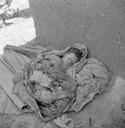Jean Vanier,
Drawn into the Mystery of Jesus through the Gospel of John
(Paulist Press, 2004).
This book, written by Jean Vanier, the well-known founder of L’Arche and Faith and Light, eloquently meditates on each chapter in John’s Gospel. Published in 2004, Drawn into the Mystery of Jesus through the Gospel of John is based on a 25-part television series on the Gospel of John, which was completed in September 2011. The series, Knowing Eternity, was produced for a Canadian multi-faith channel, Vision TV. The form of the book is as follows: the beginning of each chapter starts with a Scripture citation (usually corresponding to one chapter in John), a short, accompanying meditation by Vanier, and a black and white image drawn from a series of mosaics created by Fr. Marko Rupnik, S.J. for the Redemptoris Mater chapel of Pope Saint John Paul II. The profundity and simplicity of the featured mosaics beautifully harmonize with Vanier’s words to illuminate the particular selections of John’s Gospel. In addition to the mosaic and Scripture citations, each chapter of Vanier’s book includes frequent scriptural excerpts from other books of the Bible, as he expounds on the stories in each chapter of John.
Vanier writes conversationally about his own spiritual journey and experiences in L’Arche and Faith and Light communities. This work does not consist mainly in specific reflections on the spirituality of L’Arche, however; nor is it primarily autobiographical. Rather, it is a profound scriptural meditation, which is informed throughout by Vanier’s lifelong experience of service to the intellectually disabled; and the wisdom he has acquired from this work lends him a distinctive perspective on the Gospel of John. With this rich background, Vanier is able to inspire the reader’s own prayerful reflection on the Gospel of John. Vanier sensitively incorporates stories of people living in L’Arche communities to reflect the encounters with Christ portrayed in John’s Gospel. These examples disclose the vulnerability, trials, and weaknesses that all of humanity shares, regardless of physical or mental ability. Their weaknesses mirror our own and help us to recognize our own desire for love and community, and our own need for God’s mercy.
This new way to God is not through a separation from our bodies, a struggle to become a pure spirit; it is in and through our bodies and in all that is weak and broken in us that we meet God...All Jesus asks is that we come to him with humble and trusting hearts. (256‒57)
The stories of physical or mental brokenness and vulnerability Vanier encountered in L’Arche shed light in a privileged way on the characters of the Gospel. Each person portrayed in the Gospel is a real symbol of the Christian and his relationship with Christ. Vanier’s meditation continually shows the importance of identifying ourselves with the people whom Christ encounters in the Gospel, and the importance of being with and seeing ourselves in the vulnerable: “As we get close to the poor and weak, we begin to accept our own poverty and weakness; we learn how to become vulnerable to others…” ( 239). He frequently begins sentences and phrases with the pronoun “we,” which underscores his frequent invitation to the reader to identify with the people Christ calls, touches, heals, and forgives in the Gospel.
Vanier’s persistent theme is the gift of a humble heart trusting in Christ. In each pericope he therefore returns to the centrality of encountering Christ, heeding his call, trusting in his goodness, entering into the mystery of his life, relinquishing one’s sovereignty over one’s own life, and receiving his forgiveness. In the introduction, Vanier writes: “I propose that we do not read this Gospel simply as someone wanting more theological, historical and biblical knowledge, but rather as someone who desires to be drawn into a mystery” (14). The mystery of Christ’s humanity and suffering with and for us is a fundamental theme to which Vanier returns as he guides the reader through the Gospel of John. Vanier endeavors to show us that the human experience of suffering and mercy, as shown in John’s portrayal of Christ’s earthly life and ministry, give us the paradigm by which we can understand and evaluate our own lives.
Vanier’s work is a beautiful and gentle guide leading us through John’s Gospel. Vanier seeks to show that John wrote his Gospel to lead the Christian into a relationship with Jesus so that “each one of us can identify with him [the beloved disciple] and become a ‘beloved of Jesus’” (12). At every turn, Vanier shows how the Evangelist draws the reader into the biblical scene, involving him in the drama of its characters. The reader thus becomes one of those who is spoken to, touched, healed, and loved by Jesus. Having been gently led by Vanier into this human encounter with Jesus, he is now drawn into deeper intimacy with him.
Micheala van Versendaal received her M.T.S. in Biotechnology and Ethics from the Pontifical John Paul II Institute for Studies on Marriage and Family in 2012 and her M.Ed. in Montessori Primary Education from Loyola University in 2013; she is in her second year teaching at her parish Montessori school in Hyattsville, MD, where she lives with her husband.



